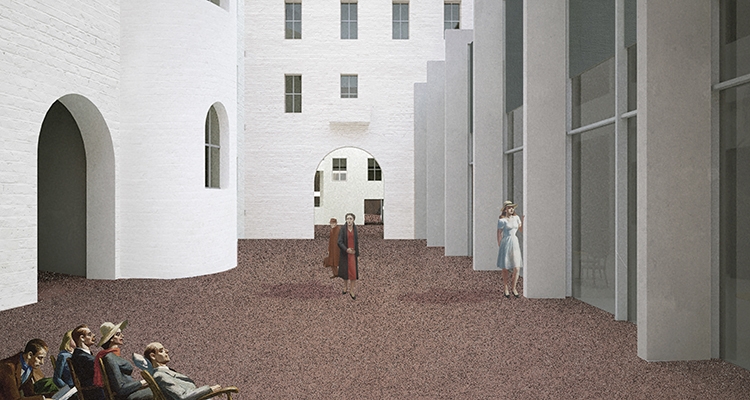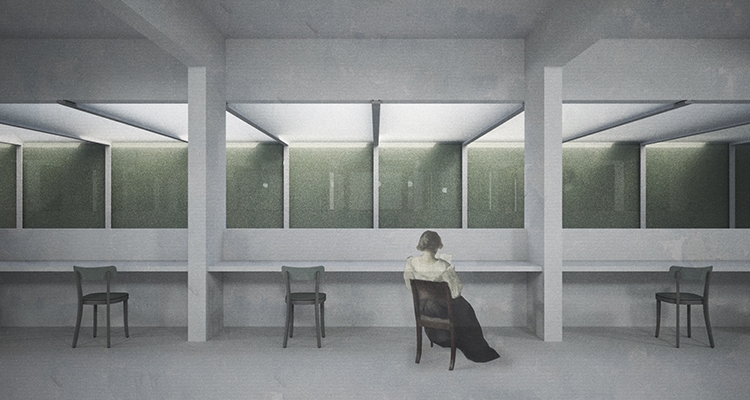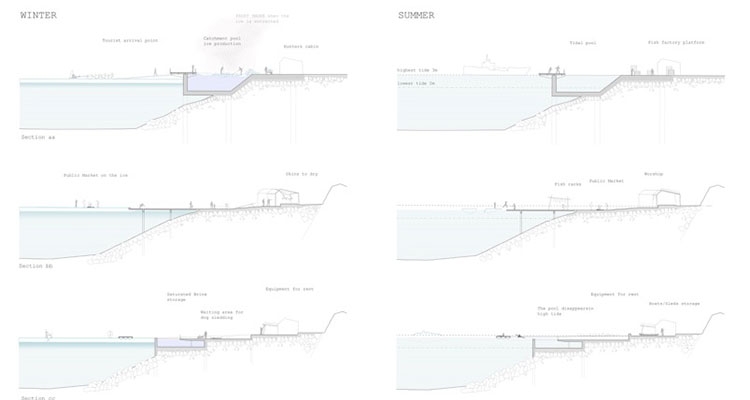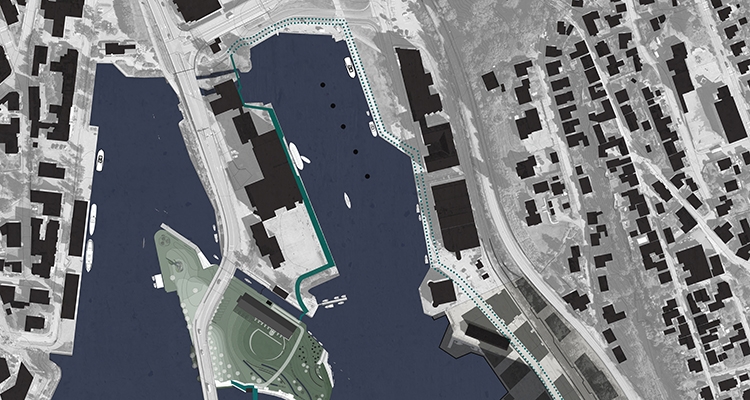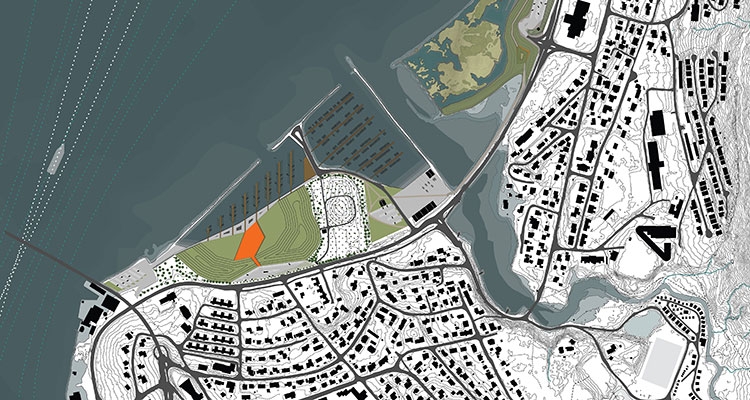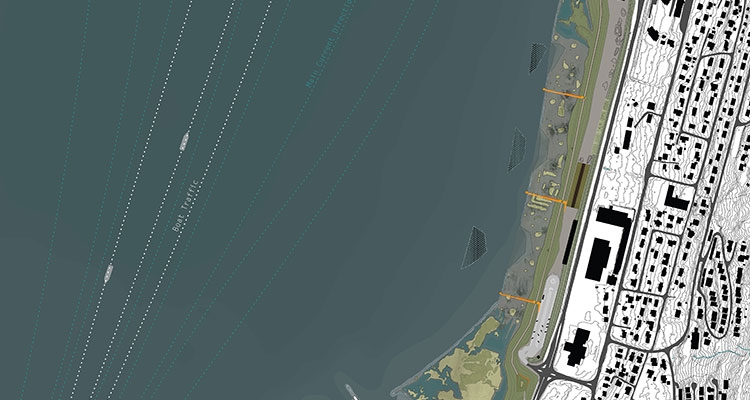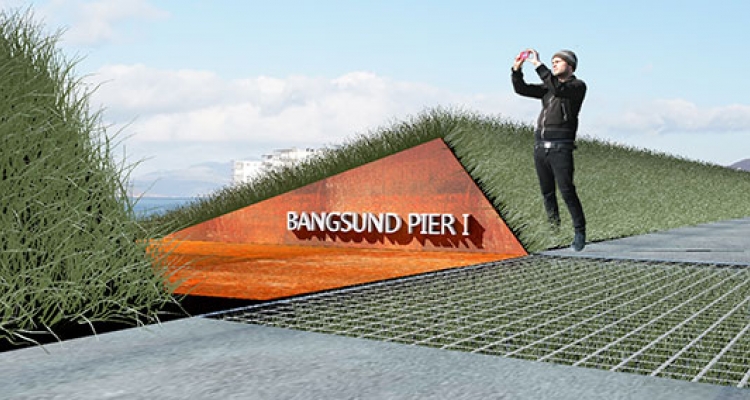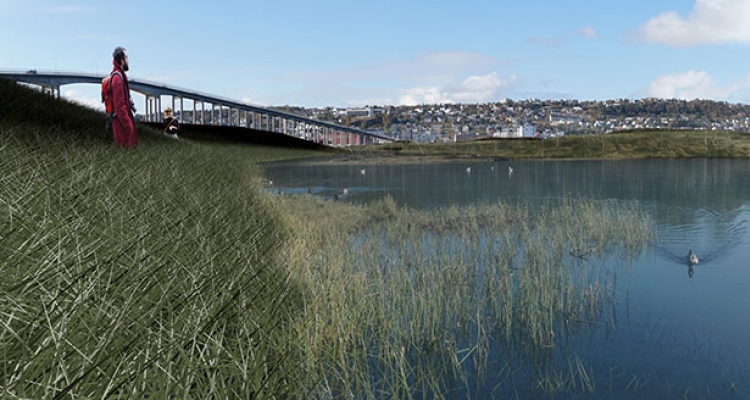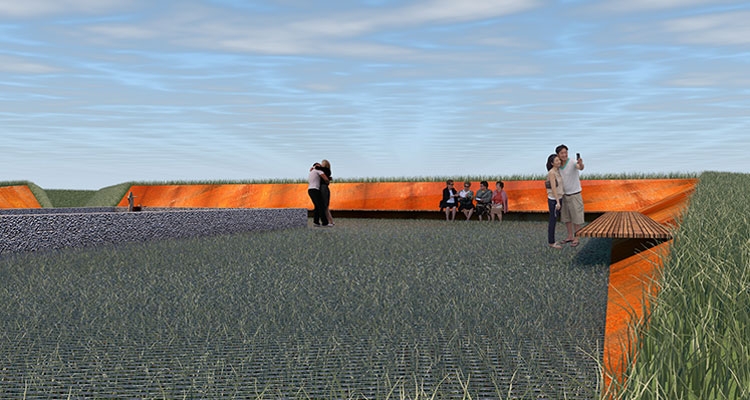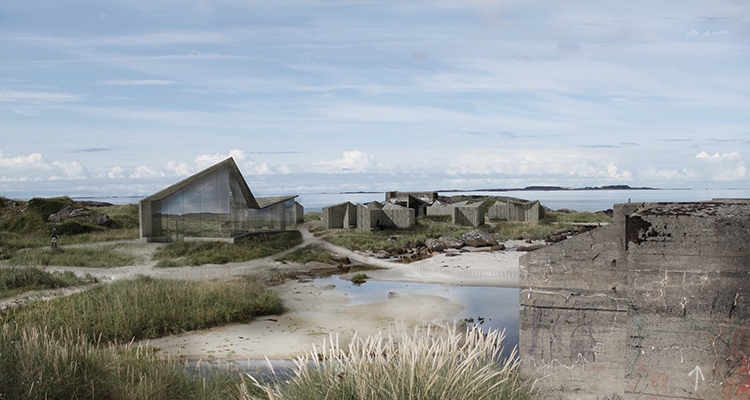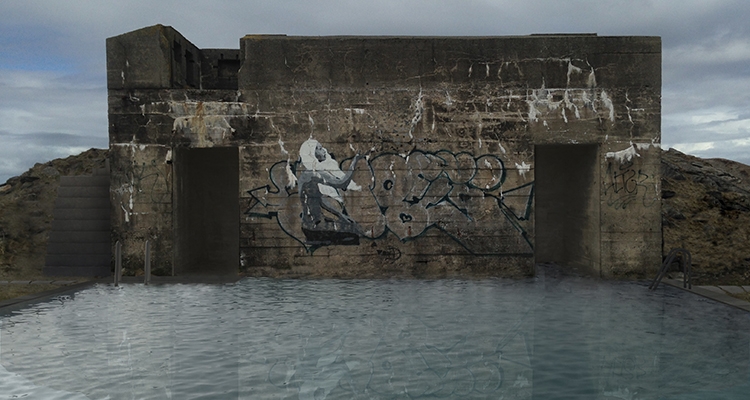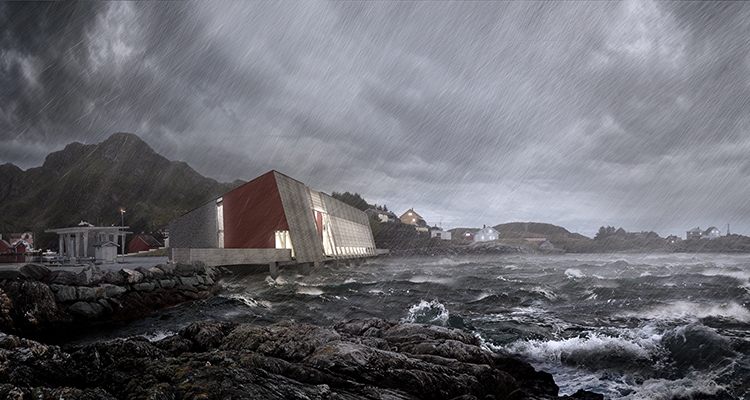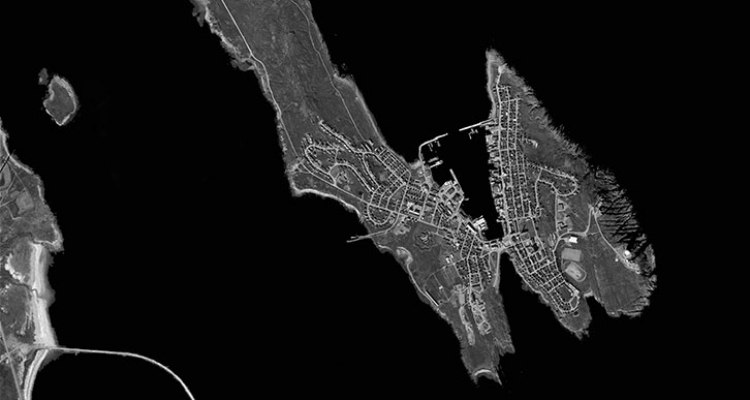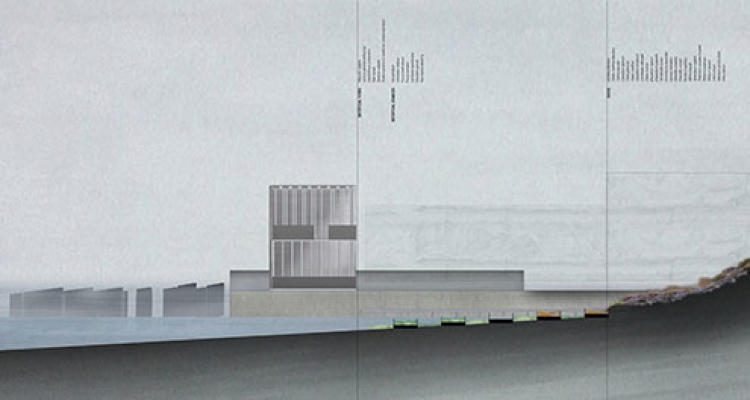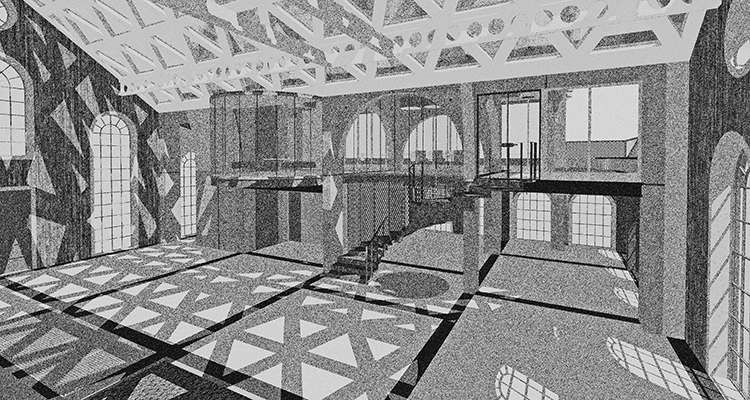Akersgata, the “Fleet Street” of Oslo, is home to both Government and established media houses. A new resource centre for the press provides facilities for freelancers and independent media producers while co-locating press unions and organizations. The transformation of an existing city block gives spatial diversity, and the 1800s buildings serve as a protective layer, providing the centre with privacy and a number of entrances. Two new buildings hold functions that could service a wide range of competing or collaborating media producers.
Diplomprosjekt
The harvesting of sea-ice (winter) and sea-salt (summer) supports the preservation of fish that is later exported. Sea ice platforms with recreational uses in winter become an evaporation pools for salt extraction in summer. Using time and natural phenomena, the project aims to benefit from the aesthetics of certain industrial activities in order to enhance the beauty of the Arctic coastline. Flowers of salt covering ice surfaces or frozen smoke emerging from ice cracks are some of the elements that configure this landscape intervention.
This project investigates strategies for improving the existing library. The original library areas are restored and the characteristic interior is preserved. The library programme is reorganised to maximise the potential within the existing building.
A new, enclosed entrance courtyard creates a public space for exhibitions, meetings and quick, informal library browsing. The formerly closed book tower is transformed into a quiet zone for individual seeking and development of knowledge.
A new, enclosed entrance courtyard creates a public space for exhibitions, meetings and quick, informal library browsing. The formerly closed book tower is transformed into a quiet zone for individual seeking and development of knowledge.
Smieøya has an industrial past, with one remaining brick building from 1881, abandoned and in poor condition. A sluice and hydropower plant provide still water to one side of the island and free-flowing water to the other. We want to transform this building into a new boathouse and tourist information, taking advantage of its close connection to the city centre and these different water conditions appropriate for rowing and kayaking.
Green infrastructure will be constructed for pedestrians and educators alike to get closer to ecology, with water playing a major role as tidal ponds with new marine life. By time the agency of flooding will shape the area and the established ecology of blue mussels in an artificial reef will perform as supportive cleaning actors. In this manner we can renegotiate that which has been taken from the sea by reclamation and landfill and evolve the area into a new nature.
Scattered along the Norwegian coastline are abandoned concrete structures left after WWII. Today their sculptural quality turns them into landmarks.
This project aims to revitalize the bunkers and provide new visitor facilities that celebrate the natural environment. Places to feel and observe the weather and landscape – the focus being the views, the ever-changing light and the timeless quality of the horizon.
This project aims to revitalize the bunkers and provide new visitor facilities that celebrate the natural environment. Places to feel and observe the weather and landscape – the focus being the views, the ever-changing light and the timeless quality of the horizon.
The Inn consists of one central building on the harbour where the ferry arrives, and individual rooms scattered throughout the historical centre. At the harbour, the central building contains the Inns reception, visitors centre, gallery, restaurant and bar. Together with the existing grocery store and the new guest harbour, it will frame a new village square.


The project aims at finding value in some of those leftover spaces. It is investigating the biological potential in one site, and that site’s possibility to go from decay to growth. The project shows how small interventions may help nature to modify them naturally.
The chosen site is located at the harbor edge, specifically a formerly very active intersection of roads and views. The harbor garden will serve as a reminder of the decay that has happened, but also turn a decayed area into a living biological zone.
The chosen site is located at the harbor edge, specifically a formerly very active intersection of roads and views. The harbor garden will serve as a reminder of the decay that has happened, but also turn a decayed area into a living biological zone.
Beyond the re-use of the original space, the diploma seeks to accentuate the original structure- a brick building rehabilitated back to its origin, as well as introducing new volumes- an extruded sink wing and a soaring, perforated brass volume.
The grid is strengthened by a system of steel- and pre-fabricated concrete pillars, beams and arches, supporting the additional volumes. Combined with clear sightlines and open structures, the steel truss roof of the production and assembly hall provides natural light and spaciousness.
The grid is strengthened by a system of steel- and pre-fabricated concrete pillars, beams and arches, supporting the additional volumes. Combined with clear sightlines and open structures, the steel truss roof of the production and assembly hall provides natural light and spaciousness.
A connection between the existing underground network, the new development of Fornebubanen and a new underground tunnel through Oslo city center have the need for a two level underground station, with capacity to handle a large amount of people in transit. Majorstua metro station will become a major hub in an improved underground network
